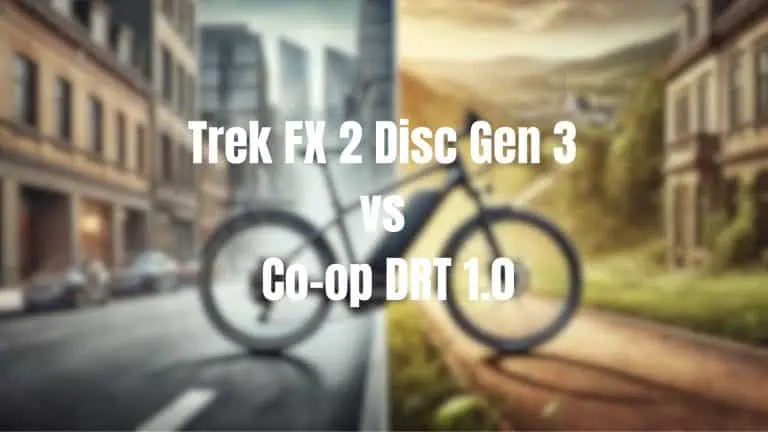Electric C Line Urban vs Co-Op CTY e2.1: A Comprehensive Comparison
In the diverse world of electric bikes, the Brompton Electric C-Line Urban and the Co-Op CTY e2.1 represent two very different approaches to e-bike design. While both aim to provide efficient electric-assisted transportation, they cater to different needs and preferences. Let’s compare these two models to help you determine which might be the better fit for your lifestyle.
Comparison Table
| Feature | Brompton Electric C-Line | Co-Op CTY e2.1 |
|---|---|---|
| Price | $3,350.00 | $1,799.00 |
| Motor Type | Front hub | Rear hub motor |
| Power | 250W | 250W |
| Brakes | Dual pivot caliper | Mechanical disc |
| Pedal Assist vs. Throttle | Pedal-assist | Pedal-assist |
| Weight | 28.9 lbs | 54 lbs. 8 oz. |
Price and Value
- Brompton Electric C-Line: $3,350.00
- Co-Op CTY e2.1: $1,799.00
There’s a significant price difference between these two models, with the Brompton Electric C-Line costing $1,551 more than the Co-Op CTY e2.1. This substantial price gap could be a deciding factor for many buyers, but it’s important to consider what each bike offers for its price.
Motor Type and Power
- Brompton Electric C-Line: Front hub, 250W
- Co-Op CTY e2.1: Rear hub motor, 250W
Both bikes feature 250W motors, but their placements differ. The Brompton uses a front hub motor, while the Co-Op CTY e2.1 uses a rear hub motor. Front hub motors can provide a “pulling” sensation, while rear hub motors can feel more like being “pushed.” The performance difference may be subtle, and personal preference often plays a role in which feels better.
Brakes
- Brompton Electric C-Line: Dual pivot caliper
- Co-Op CTY e2.1: Mechanical disc
The Co-Op CTY e2.1 features mechanical disc brakes, which generally offer better stopping power, especially in wet conditions, compared to the dual pivot caliper brakes on the Brompton. However, the Brompton’s caliper brakes are lighter and may require less maintenance.
Pedal Assist vs. Throttle
Both bikes use pedal-assist systems, meaning they provide power only when you’re pedaling. This creates a more natural riding experience and can help extend battery life compared to throttle-only systems.
Weight
- Brompton Electric C-Line: 28.9 lbs
- Co-Op CTY e2.1: 54 lbs. 8 oz.
The weight difference between these bikes is dramatic. The Brompton Electric C-Line is less than half the weight of the Co-Op CTY e2.1. This significant weight saving is largely due to the Brompton’s compact, folding design.
Additional Considerations
- Folding Capability: The standout feature of the Brompton Electric C-Line is its ability to fold into a compact size. This makes it incredibly portable and easy to store, which could be a game-changer for urban dwellers with limited space or those who need to combine cycling with public transport. The Co-Op CTY e2.1 does not fold.
- Intended Use: The Brompton is primarily designed for urban commuting and last-mile transportation. The Co-Op CTY e2.1, while also suitable for urban use, may be more versatile for longer rides or light off-road use.
- Range and Battery: Range would depend on specific battery capacities, but the lighter weight of the Brompton could contribute to better efficiency.
- Carrying Capacity: The Co-Op CTY e2.1 is likely better suited for carrying heavy loads or additional passengers, given its sturdier frame.
- Brand and Support: Brompton is renowned for its folding bikes, while Co-Op is REI’s house brand, which comes with the backing of REI’s customer service and their excellent return policy.
Which is Better?
The choice between these two e-bikes depends heavily on your specific needs and lifestyle:
- Portability: If you need a bike that can be easily stored in small spaces or carried onto public transport, the Brompton Electric C-Line is the clear winner.
- Price: The Co-Op CTY e2.1 offers similar power at a much lower price point, providing better value for those on a budget.
- Weight: The Brompton Electric C-Line is significantly lighter, making it easier to carry and maneuver when not riding.
- Versatility: For longer rides or more varied terrain, the Co-Op CTY e2.1 might be more suitable.
- Braking Performance: The Co-Op CTY e2.1 has an edge with its mechanical disc brakes.
In conclusion, the Brompton Electric C-Line is better suited for urban commuters who prioritize portability and storage convenience, and are willing to pay a premium for these features. It’s ideal for multi-modal commuters or those with limited storage space.
The Co-Op CTY e2.1 offers a more traditional e-bike experience at a lower price point. It’s great for those who want a versatile e-bike for various types of rides and don’t need the folding capability.
Consider your daily commute, storage situation, and riding preferences when making your decision. Both bikes offer quality rides but cater to very different needs in the e-bike market.






